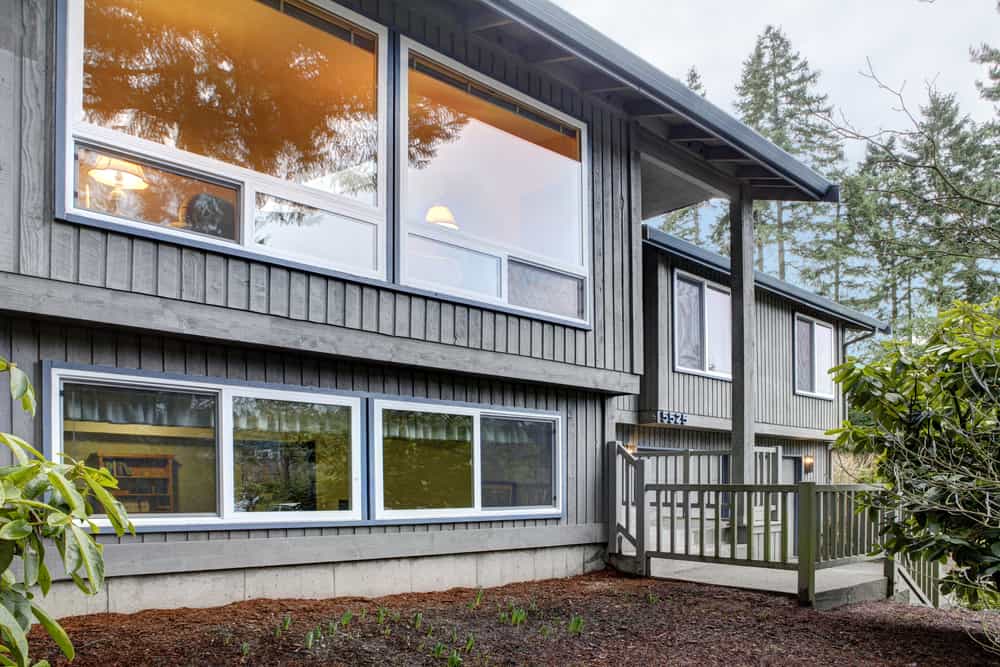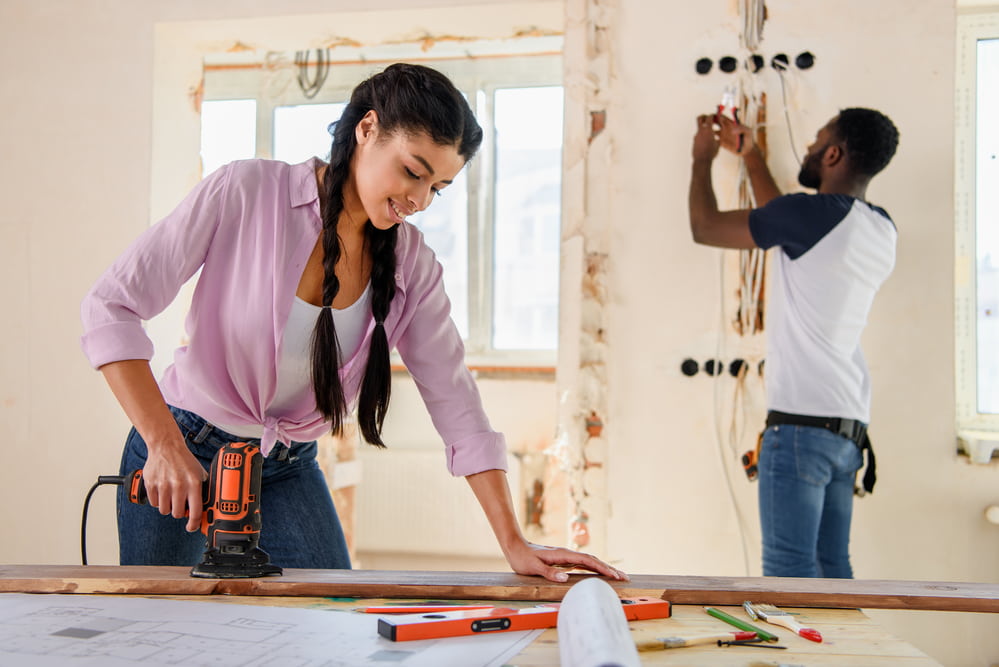What Is a Bi-Level House? |Bi-Level Houses Vs. Split-Level Houses |How Common Are Bi-Level Houses? | Bi-Level Houses & Property Value | Are Bi-Level Homes Hard To Sell?
Bi-level houses, sometimes called raised ranches, were a common floor plan in the 1950s and 60s, particularly east of the Mississippi. If you’re home shopping in neighborhoods that were built during that time period, you’re liable to encounter a few of them.
A bi-level house can be a great choice for certain buyers. However, due to their unusual layout, they only tend to appeal to a small segment of the market. For this reason, many people avoid them when they’re shopping for investment properties. Here’s a quick guide to bi-level homes, and how they fit into the broader housing landscape.
[ Thinking about investing in real estate? Register to attend a FREE online real estate class and learn how to get started investing in real estate. ]

What Is a Bi-Level House?
A bi-level house is a combination of a two-story house and a ranch. The main level is located entirely above ground, while the lower level is mostly underground, with just enough elevation to let some light in through the windows.
The front door itself is located at ground level. When you step inside, there’s a small landing or foyer, with a half flight of stairs going up to the main level, and another half flight going down to the bottom level.
The main living spaces are located on the upper floor. Here, you’ll find the dining room, kitchen, full bathroom, and bedrooms. The lower level normally consists of a living room, a utility/laundry room, and a drive-under garage.
Bi-Level Houses Vs. Split-Level Houses
One thing that trips a lot of people up is the difference between a bi-level house and a split-level house. These designs are both ideal for smaller lots, because they add floor space vertically instead of horizontally. And due to changing trends, neither style is commonly built these days.
That said, bi-level and split-level houses are different in significant ways. Primarily, a split-level house has three or more floors, while a bi-level house only has one main floor and a partial lower floor. Here are several other things that separate the two.
-
Split-level homes have lower windows on one side than on the other, to let in more natural light.
-
Split-level homes have a third floor for the bedrooms, with more living space on the main level, and a partial lower level. In a bi-level home, there’s no third level, and the living space is reduced to make room for sleeping areas.
-
Bi-level homes are almost always a modified ranch style. Split-level homes come in a variety of styles.
-
Split-level homes have more separation between areas, so you can enjoy more privacy.
-
Split-level homes became popular earlier, and reached their heyday in the 1950s.
How Common Are Bi-Level Houses?
Bi-level houses are not as common as they used to be. Popularity peaked in 1960’s to 1970’s, and they are generally not included in newer neighborhoods. That being said, if you want to buy a new bi-level house, you still can. You will have to make a custom request, and it won’t be as cheap as a standard model.
The History Of Bi-Level Homes
Bi-level homes became trendy in the 1950’s, again peaking in popularity over the next two decades. These home styles were thought to have a more contemporary look than the traditional ranch homes of the time. Additionally, they allowed for more space as homeowners’ preferences changed and people became accustomed to more space. However, they eventually lost popularity and are not commonly built anymore.
Many Gen. X-ers grew up in bi-level homes, and many millennials hitting the housing market are moving into these properties. If you live in a market that experienced large waves of population growth at the middle of the century, there may be quite a few bi-levels in your area. Take a look around next time you drive through your town to see if you notice any.
Bi-Level Houses & Property Value
Bi-level houses have a couple of major limitations when compared to most other house styles. For one thing, you can’t access any part of the house without going up or down a set of stairs. For another thing, the stairs and the front door location make it difficult to remodel. This can make it harder to find a buyer, or even to rent them out.
Then again, there are a number of attractive features that can appeal to particular buyers. For one thing, having the living room on a different floor from the kitchen can be great for parents. You can cook your dinner in peace while the kids are playing downstairs. Bi-level houses are also a great option in crowded neighborhoods, since you can fit more square footage on a smaller lot. For people in those situations, a bi-level house can represent an excellent value.
Are Bi-Level Homes Hard To Sell?
As we’ve discussed, there are several reasons a person might want to buy a bi-level house. But for all of those positive points, there are some downsides. They have less space than a regular two-storied house, and unlike with a traditional ranch, you still have to contend with stairs. There’s also the issue of limited natural light in the basement.
This limits the number of potential buyers, which can make a bi-level house harder to sell. That said, it can also depend on the market, and what kinds of people are looking for homes.

How To Remodel A Bi-Level Home
Remodeling a bi-level home may require you to brush up on your design skills. While mid-century is all the rage right now, there are certain aspects of a bi-level home that can make them look dated or strange to potential homebuyers. Consider the following updates if you are interested in giving your bi-level home a makeover — or if you want to move into one and make it your own.
Update The Exterior
Start by updating the exterior. Many ranch-style homes of this era were built with brick, wood, or stucco on the outside. Depending on what you are working with, you can opt for a fresh paint job. There are numerous ways to paint over brick, though it’s not always necessary, and give the property a fresh look. The same can be said for wood siding or stucco. Drive around your neighborhood to look for inspiration and talk to a contractor about possible ideas.
Update The Decor
The challenge many bi-level homeowners run into when selling is not the levels of the property, but the dated decor that came along with the era. For example, many houses of the 1960’s and 1970’s were built with some form of wood paneling on the walls. Consider painting over this in a neutral tone, or replacing certain walls for drywall instead. Other common decor pieces of the era were bold wallpapers and fluffy carpeting. These can be simple fixes as you remodel the home.
Create An Addition
A great option for a remodel is to add an addition to the property. Because bi-level properties are ranch-style homes, they are generally simple to add onto. Work with a contractor to learn the possibilities when it comes to adding on an additional unit. You may be able to convert the garage, add an addition to the back, or create a sunroom in the front of the house. There are numerous possibilities that can help you boost the value of the home and improve the overall appearance of the property.
Summary
If your main reason for buying a house is the investment, a bi-level house is not likely to grow in value as quickly as a standard two-story house. That said, there are many other reasons you may want to own one, whether because you have small children or you like the lot. In those cases, it can still make sense to buy.
Ready to start taking advantage of the current opportunities in the real estate market?
Click the banner below to take a 90-minute online training class and get started learning how to invest in today’s real estate market!

